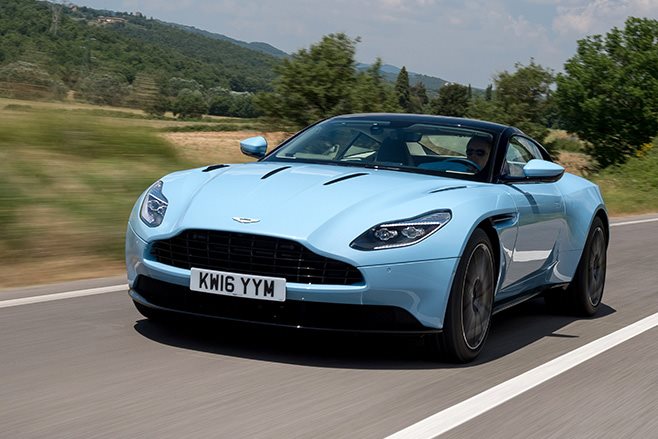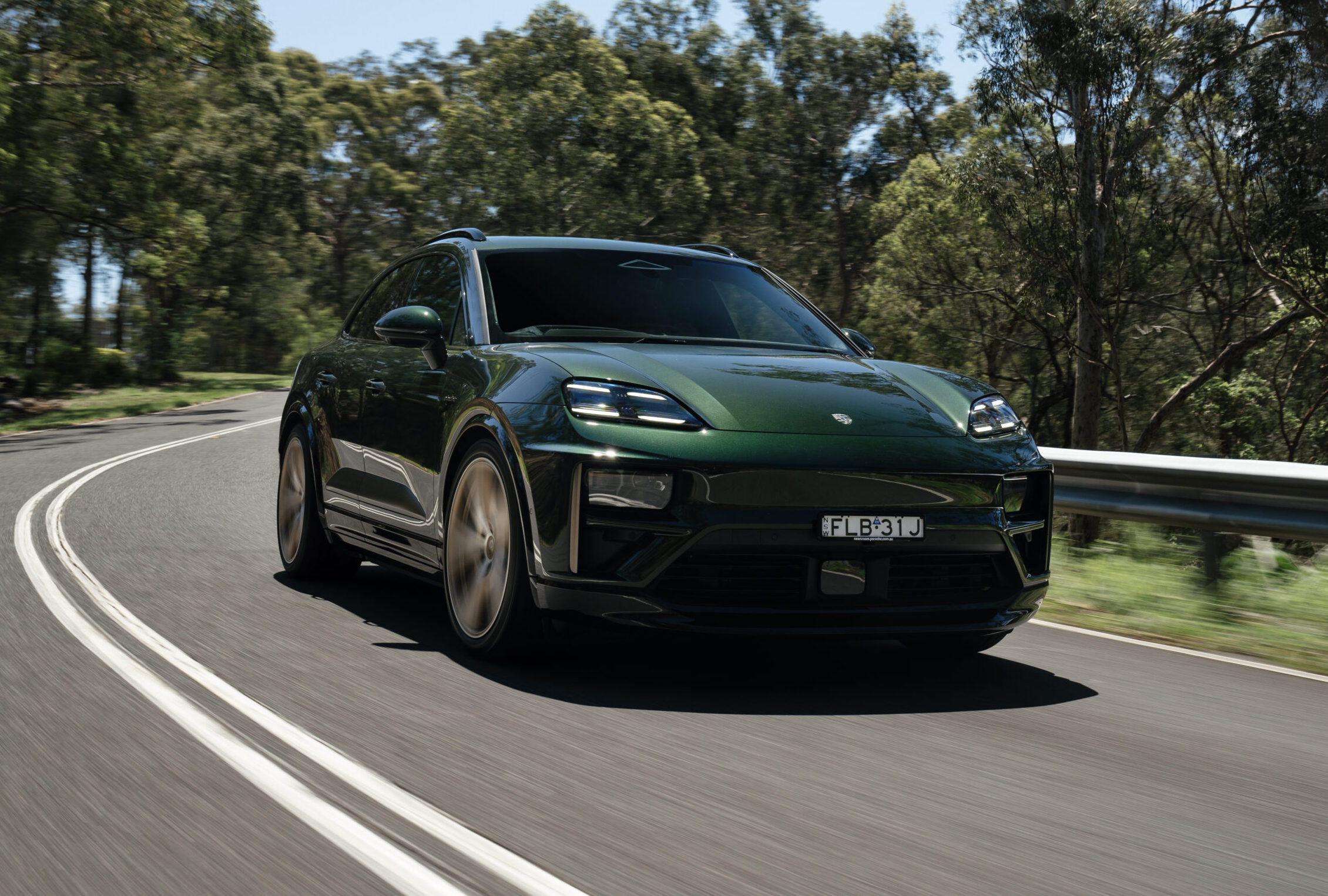The most interesting Aston Martin in ages, the DB11 introduces a new V12 engine and all-aluminium platform, and provides a first taste of the fruits of the brand’s tech tie-up with Daimler.
WHAT IS IT? Big 2+2 GT with oodles of almost everything. There’s design drama outside, leathery luxury inside, a beast beneath its bonnet and chassis sophistication down below. All it lacks is room for rear seat passengers and luggage.
WHY WE’RE TESTING IT This is a hugely important car for Aston Martin. The DB11’s architecture will provide the foundation for a new generation of road cars from the brand, including an SUV, and its twin-turbo V12 is sure to power future top-end models. When executives say the DB11 launches Aston Martin’s renaissance it’s not really an exaggeration. With so much riding on it, how could Wheels decline an invitation to the car’s international press launch in Italy?

THE WHEELS VERDICT Suavely charming most of the time, and plenty quick if required, the DB11 is the most convincing Aston Martin in years. New V12 is a great engine, delivering exactly the kind of performance promised by the exterior design.
PLUS: Design; engine; sweet chassis set-up; interior fit-out MINUS: High-speed wind noise; cramped rear seats; small boot
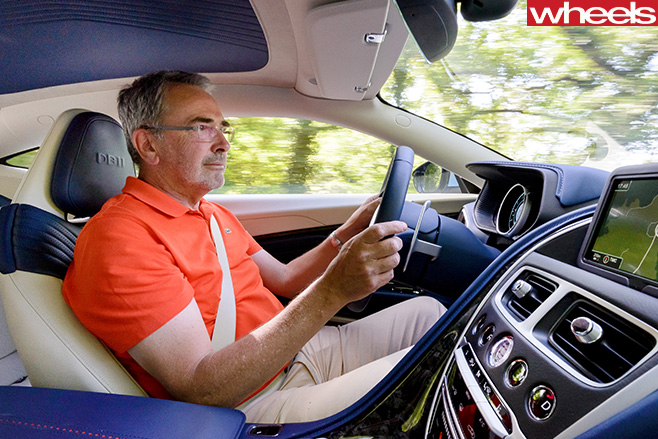
This look is one of six designer specifications created by Aston Martin to show the breadth of colour and trim choices available to buyers of its new DB11. Other looks have names like Mysterious Sport, New Heritage and Iconic Craft, none of them quite so loud and adventurous as Shanghai Fashionista.
Together they testify to Aston Martin’s ambition to ensure its big new 2+2 GT has truly global appeal. This is a car designed to satisfy the fantasies of those special people with a lot to spend ($395,000 in Australia, when it arrives late this year), regardless of where they live, their cultural background or personal taste. But the DB11’s eye-catching colours and eye-watering array of interior finish options are, in truth, mere superficial details.
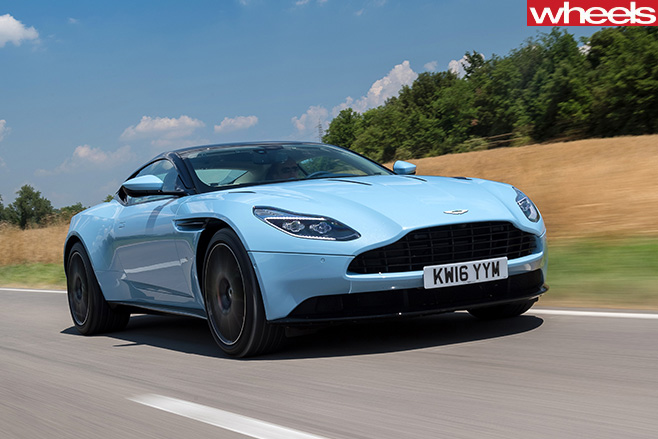
Aston Martin’s owners, mainly hard-headed investment companies, have agreed to fund development of the new products, up to and including the DBX. From that point onwards, they expect Aston Martin to be a self-sustaining operation. While high-priced, low-volume specials will generate some cashflow, it’s the models built on the new architecture that will have to do most of the work. So you can see why the DB11 needs to be good.
As if this pressure wasn’t enough, the car also introduces a brand-new engine. The DB11’s 5.2-litre twin-turbocharged V12 was designed in-house.
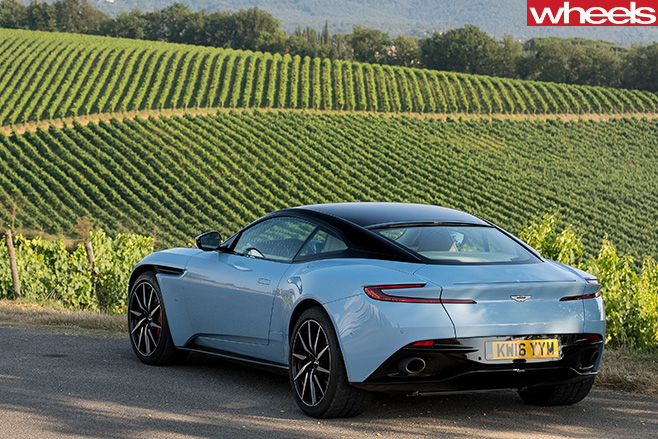
The V12 is connected via a torque tube to the DB11’s rear-mounted eight-speed transaxle. The transmission is a beefy version of ZF’s popular automatic, designed to cope with the Aston’s 700Nm torque output.
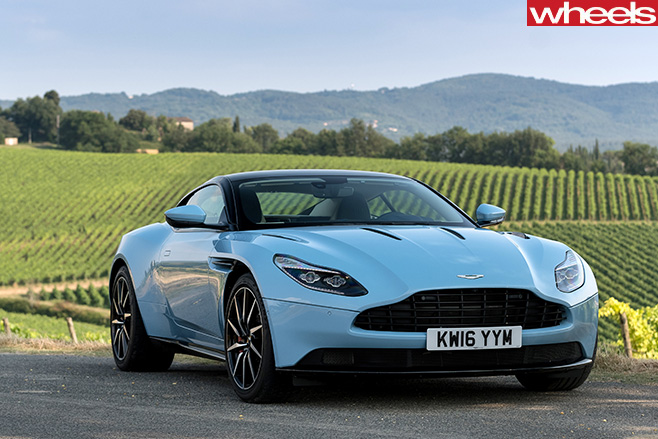
Up front in the DB11 there’s much to enjoy. The leather that’s everywhere is flawless and beautifully stitched. The car’s buttons, knobs, switches and screens are straight from Mercedes, a result of Daimler’s five percent ownership of Aston Martin and a technical tie-up inked back in 2013. They don’t look out of place.

Aston Martin designates the DB11 a GT, and the car’s GT mode leans heavily in the direction of Turismo. It’s perfect for high-speed cruising on an Italian autostrada, where the only niggle is wind noise that seems to be generated by the mirrors. But on a winding Tuscan backroad with the chassis set to GT, the DB11 feels Labrador-puppy lollopy.
Flicking to Sport mode on both buttons increases steering weight, drivetrain responsiveness and remedies the lack of damping, with little loss of the chassis’ impressive ability to absorb lumps and bumps. It’s the best mode for spirited public-road driving, better than the stiff Sport Plus chassis setting. The Aston may be a big and bulky bugger, but Sport encourages the driver to exploit its V12 and the grip of its 20-inch Bridgestone Potenza S-007 tyres.

Equally easy is imagining how the DB11’s obviously excellent essentials could be adapted for greater power and speed. Aston Martin’s revival is off to a convincing start – even dressed in Shanghai Fashionista blue.
SPECS Model: Aston Martin DB11 Engine: 5204cc V12, dohc, 48v, twin turbochargers Max power: 447kW @ 6500rpm Max torque: 700Nm @ 1500-5000rpm Transmission: 8-speed auto Weight: 1975kg (est) 0-100km/h: 3.9sec (claimed) Fuel economy: Not available Price: $395,000 On sale: December


